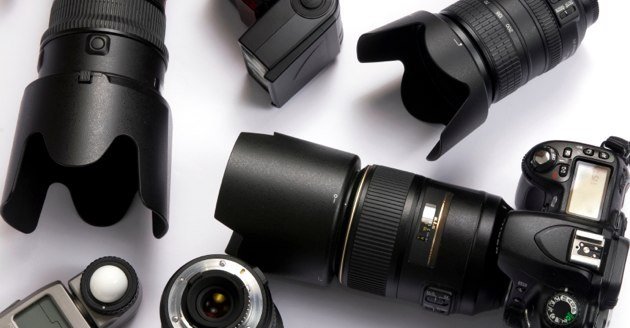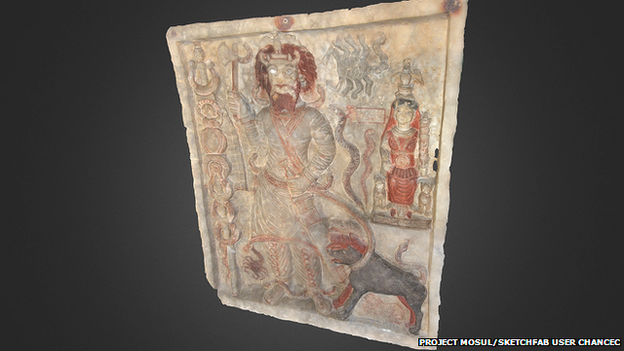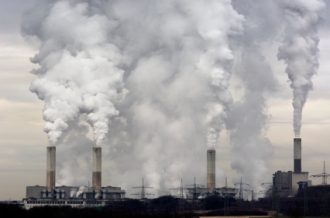Label: culture
Wednesday 15th June 2016Google's Preservation of Artwork

Google, arguably one of the most successful technology companies of all time, has a lot of capital to invest. As a result, they have their fingers in a vast number of pies, from mobile phones to self-driving cars to scholarly article publishing. But one of their lesser-known ventures is the one that is probably nearest and dearest to those of us in the art world: the Google Cultural Institute.
The Cultural Institute has partnered with over 1000 museums and galleries around the world to digitise their artworks and bring them online, so they can be enjoyed by anyone with internet access. One of their best tactics for this is an incredibly high-resolution camera that is being used in the digitising process, and it just got a huge boost forwards in the last few months.
While having an initial burst of creativity during the launch of their search engine and naming it Google, the company has since gone rather literally-minded when it comes to naming their inventions (even their crazy balloon wireless internet project is called Project Loon, appropriately enough), which leaves us with the singularly uninspiring 'Art Camera'.
What IS inspiring, however, is how impressive it is when it comes to preserving images of some of the most popular artworks in the world. At first, the Cultural Institute was rather slow at digitising images, scanning and uploading just 200 images in five whole years. Admittedly, the images are measured in gigapixels rather than megapixels, but nevertheless, that's only about one image per week.
Suddenly in the last few months alone, over 1000 images have been scanned and made available to the general public, all thanks to the Art Camera system. The photographer/technician simply outlines the borders of the image for the system, and then the rest of the process is computer-controlled, stitching together hundreds of smaller photographers using the Google servers and outputting super-high-resolution images.
Marzia Niccolai, the Cultural Institute's technical program manager, explains, "The capture time has been reduced drastically. Previously it could take almost a day to capture an image. To give you an idea, now if you have a one meter by one meter painting, it would take 30 minutes."
Posted on June 15th 2016 on 01:57pm
0 Comments
Friday 19th June 2015Reconstructing Lost Artworks
War is a terrible and seeming inescapable part of the world, and we pay uncountable prices for it, both literally and figuratively - but one of the tragically often-ignored prices is in the cultural treasures that are lost along the way. Most notable recently during the invasion of Iraq in 2003 when numerous museums and galleries were looted, and unfortunately still occurring today thanks to the constant fighting in many areas of Iraq and neighbouring countries due to the rise of the Islamic State, some treasures are being stolen and sold on the black market, while some are simply being destroyed. Fortunately for the cultural history of the world, some of these priceless artifacts are being reconstructed using an advanced technology known as photogrammetry.
Photogrammetry is a process that takes multiple photos of a different angles of an object and recreates them as a digital 3D file, one that could then be either rendered and viewed on the computer screen, or even put through a 3D printer to create a replica of the original piece. Naturally, these can never replace the value of the lost works, but since most will never see the light of day again, it's the best chance we're likely to have.
One of the most interesting projects to come along that uses these techniques is named Project Mosul, after the now-destroyed Mosul Museum. It's based around a crowdsourcing effort, so that anyone who visited the museum and snapped pictures of the pieces on display can submit their photographs to the project to help refine the 3D models of destroyed artworks. The more source photographs there are, the more detailed the reconstruction can be, as each photograph is typically taken from a slightly different angle, which gives a slightly different description of the 3D surfaces of the object in question.
The founders of Project Mosul, who are entirely volunteer staff, hope to expand the project to cover other destroyed sites around the world, and open up new possibilities for experiencing cultural treasures that have been destroyed. Would that it weren't necessary, but war sadly seems to be one of the most constant phenomenons throughout history - perhaps one day, we'll be able to overcome even that legacy.
Speaking to the BBC, Project Mosul co-founder Matthew Vincent said, "3D printing is really proving to be one of the most valuable assets for heritage that we have today. It's a way to bring them back to life and have a tactile experience with them, even if we can't guarantee that they're exactly as the original would have been.
"Whether it is because of conflict or natural disaster, our heritage is such a delicate and valuable resource, the only way that we can really preserve it is to take the steps to make those digital surrogates, so that we can protect the physical reality of that heritage as well."
Posted on June 19th 2015 on 09:15pm
0 Comments
Tuesday 01st April 2014Chinese Protest Art

China is in a very strange position these days - despite being home to one of the oldest recorded civilizations in the world, and having a rich cultural heritage steeped in artistic traditions, they are also host to one of the most repressive political regimes on the planet. Internet services are carefully censored and monitored by a system known as 'the Great Firewall of China', and political and artistic statements are discouraged by the ruling Communist party. But even as this repression continues - and perhaps, to some extent, even because of it - there are a number of active Chinese artists who have captured international attention and highlighted the interplay between protest and art in a stifled intellectual climate.
By now, most art enthusiasts have heard the name of Ai Weiwei, a Chinese artist who has been the subject of documentary films (such as Never Sorry, as we discussed in a previous post) and invited to galleries around the world, all while being persecuted by the Chinese government, but there are a quite a number of lesser-known artists who are equally interesting.
Intellectual climates aren't the only thing being stifled in China, as the staggeringly rapid growth of the economy and industry has left the natural environment struggling to support healthy living conditions. Choking smog is a daily fact of life in most major urban centers in China, and this fact was recently driven home by Beijing-based artist Liang Kegang. Having visited the south of France on business, he brought back several souvenirs - one of which was a jar of clean, clear air from Provence. Amusingly enough, he put the jar up for auction at a popular art auction house, and the jar sold for over 5000 yuan - nearly £500 - to a collector.
Giving an interview about the piece, Liang said, “Air should be the most valueless commodity, free to breathe for any vagrant or beggar. This is my way to question China’s foul air and express my dissatisfaction.” Perhaps not quite the grand gesture he was hoping for, but it's just one of a number of similar art-meets-protest projects that have been popping up all over China in recent years with a focus on climate problems. A performance art project in Beijing in February had 20 artists playing dead outside the Temple of Heaven, all wearing dust masks. Another performance piece in Changsha had artists hosting a mock funeral for the last living citizen of Changsha, who they claimed would die of the smog.
Perhaps most surreal of all? Anyone who ever watched the late 80's movie Spaceballs, starring Mel Brooks and Rick Moranis, will recall a scene where the president cracks open a can of 'Perri-air', fresh air in can form - now, 'Good Person' brand cans of clean air can be purchased online in China from TaoBao for under £2. Sometimes, life really does imitate art.
Posted on April 01st 2014 on 01:06am
0 Comments
 Google, arguably one of the most successful technology companies of all time, has a lot of capital to invest. As a result, they have their fingers in a vast number of pies, from mobile phones to self-driving cars to scholarly article publishing. But one of their lesser-known ventures is the one that is probably nearest and dearest to those of us in the art world: the Google Cultural Institute.
Google, arguably one of the most successful technology companies of all time, has a lot of capital to invest. As a result, they have their fingers in a vast number of pies, from mobile phones to self-driving cars to scholarly article publishing. But one of their lesser-known ventures is the one that is probably nearest and dearest to those of us in the art world: the Google Cultural Institute. War is a terrible and seeming inescapable part of the world, and we pay uncountable prices for it, both literally and figuratively - but one of the tragically often-ignored prices is in the cultural treasures that are lost along the way. Most notable recently during the invasion of Iraq in 2003 when numerous museums and galleries were looted, and unfortunately still occurring today thanks to the constant fighting in many areas of Iraq and neighbouring countries due to the rise of the Islamic State, some treasures are being stolen and sold on the black market, while some are simply being destroyed. Fortunately for the cultural history of the world, some of these priceless artifacts are being reconstructed using an advanced technology known as photogrammetry.
War is a terrible and seeming inescapable part of the world, and we pay uncountable prices for it, both literally and figuratively - but one of the tragically often-ignored prices is in the cultural treasures that are lost along the way. Most notable recently during the invasion of Iraq in 2003 when numerous museums and galleries were looted, and unfortunately still occurring today thanks to the constant fighting in many areas of Iraq and neighbouring countries due to the rise of the Islamic State, some treasures are being stolen and sold on the black market, while some are simply being destroyed. Fortunately for the cultural history of the world, some of these priceless artifacts are being reconstructed using an advanced technology known as photogrammetry. China is in a very strange position these days - despite being home to one of the oldest recorded civilizations in the world, and having a rich cultural heritage steeped in artistic traditions, they are also host to one of the most repressive political regimes on the planet. Internet services are carefully censored and monitored by a system known as 'the Great Firewall of China', and political and artistic statements are discouraged by the ruling Communist party. But even as this repression continues - and perhaps, to some extent, even because of it - there are a number of active Chinese artists who have captured international attention and highlighted the interplay between protest and art in a stifled intellectual climate.
China is in a very strange position these days - despite being home to one of the oldest recorded civilizations in the world, and having a rich cultural heritage steeped in artistic traditions, they are also host to one of the most repressive political regimes on the planet. Internet services are carefully censored and monitored by a system known as 'the Great Firewall of China', and political and artistic statements are discouraged by the ruling Communist party. But even as this repression continues - and perhaps, to some extent, even because of it - there are a number of active Chinese artists who have captured international attention and highlighted the interplay between protest and art in a stifled intellectual climate.



